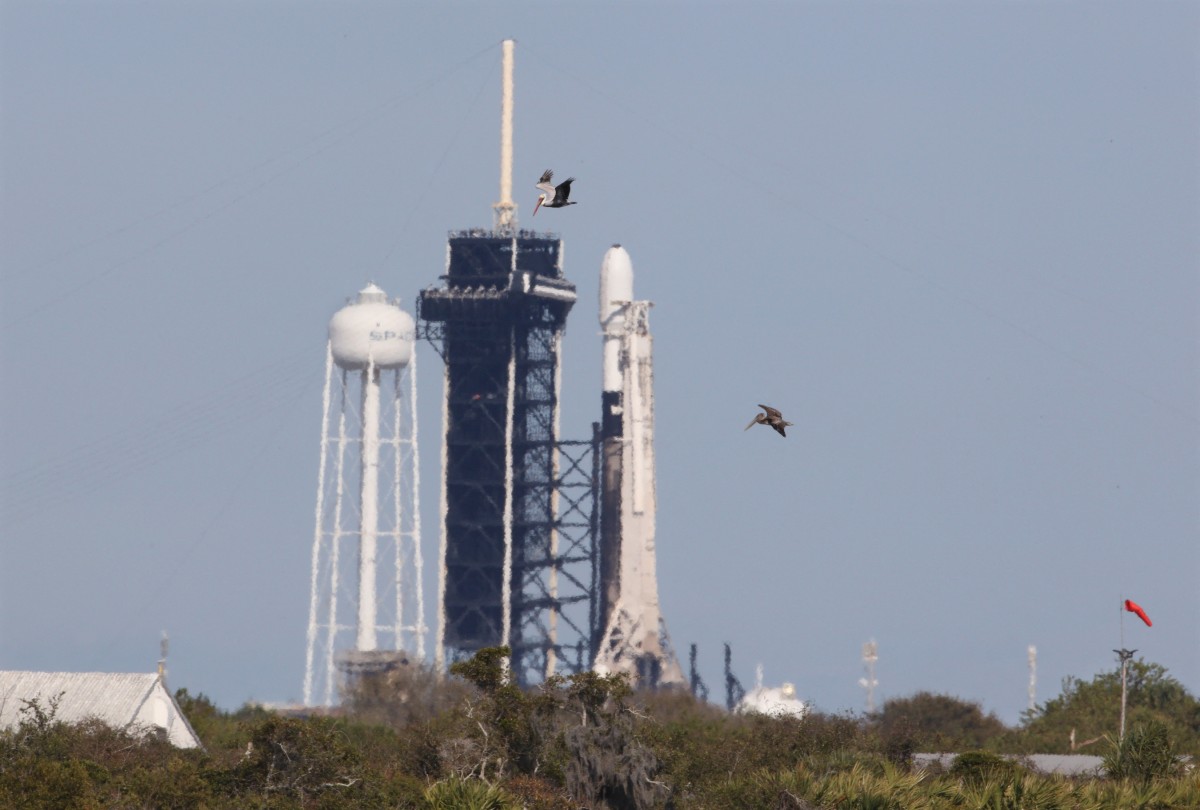Texas, United States – An American spaceship attempting a lunar landing has been rescheduled to launch early Thursday, the second private-led effort this year after the first ended in dismal failure.
Intuitive Machines, the Houston company leading mission “IM-1,” hopes to become the first non-government entity to achieve a soft touchdown on the Moon and land the first US robot on the surface since the Apollo missions more than five decades ago.
Its hexagonal-shaped Nova-C lander named “Odysseus” had been set to blast off on top of a SpaceX Falcon 9 rocket from the Kennedy Space Center in Florida at 12:57 am Wednesday local time (0557 GMT).
But NASA said the launch was postponed due to “off-nominal methane temperatures prior to stepping into methane load,” according to a post on social media platform X.
“It is now scheduled for 1:05am ET (0605 GMT)” on Thursday, the space agency added.
Odysseus is powered by a mix of supercooled methane and oxygen to enable the spaceship to reach its destination quickly, avoiding prolonged exposure to a region of high radiation surrounding the Earth.
Intuitive Machine’s Trent Martin told reporters before the postponement that the “opportunity to return the United States to the Moon for the first time since 1972 is a feat of engineering that demands a hunger to explore.”
The craft was due to reach its landing site Malapert A on February 22, an impact crater 300 kilometers (180 miles) from the south pole.
NASA hopes to eventually build a long-term presence and harvest ice there for both drinking water and rocket fuel under Artemis, its flagship Moon-to-Mars program.
Back to the Moon –
NASA paid Intuitive Machines $118 million to ship science hardware to better understand and mitigate environmental risks for astronauts, the first of whom are scheduled to land no sooner than 2026.
The instruments include cameras to investigate how the lunar surface changes as a result of engine plume kicking up dust and a device to analyze the charged dust haze that appears during lunar twilight as a result of solar radiation.
Odysseus also carries an advanced landing system that uses laser pulses to detect hazards like small boulders and craters.
There is more colorful cargo aboard as well, including a digital archive of human knowledge and 125 mini-sculptures of the Moon by the artist Jeff Koons.
After touchdown, the payloads are expected to run for roughly seven days before lunar night sets in on the south pole, rendering Odysseus inoperable.
IM-1 is the second mission under a NASA initiative called Commercial Lunar Payload Services (CLPS), which the space agency created to delegate trucking services to the private sector to achieve savings and to stimulate a wider lunar economy.
The first, by Pittsburgh-based Astrobotic, launched in January, but its Peregrine spacecraft experienced an engine anomaly that caused a fuel leak and was eventually brought back to burn up in Earth’s atmosphere.
Busy calendar
Soft landing a robot on the Moon is challenging because it has to navigate treacherous terrain amid a lag of several seconds in communications with Earth and use its thrusters for a controlled descent in the absence of an atmosphere that would support parachutes.
Only five nations have succeeded: the Soviet Union was first, then the United States, which is still the only country to also put people on the surface.
In America’s long absence, China has landed three times since 2013, India in 2023, and Japan was the latest, last month — though its robot has struggled to stay powered on after a wonky touchdown left its solar panels pointing the wrong way.
Apart from Astrobotic’s failed attempt, two other private initiatives got close: Beresheet, operated by an Israeli nonprofit, crash-landed in 2019, while Japanese company ispace also had a “hard landing” last year.
Intuitive Machines has two additional launches scheduled for this year, while another Texas company, Firefly Aerospace has one too. Astrobotic will get another shot in late 2024, carrying a NASA rover to the Moon’s south pole.
NASA is increasingly purchasing services rather than hardware from commercial partners, unlike during the Cold War when it had a nearly unlimited budget and dictated contracts down to the last bolt.








